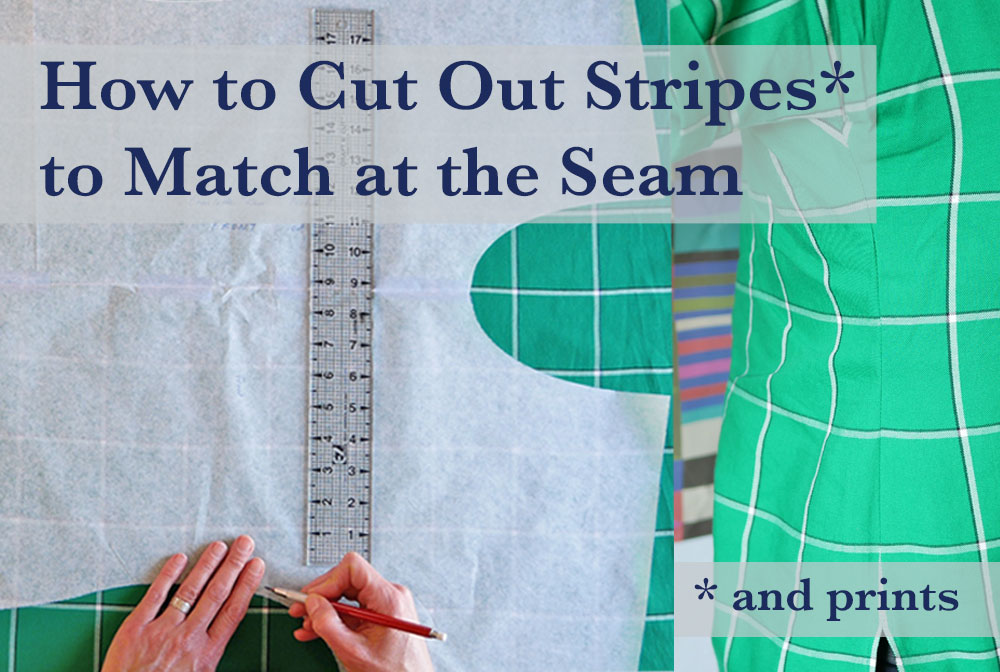
Folding your fabric to cut out your pattern, as most patterns instruct you to do, means you obviously cannot see the fabric on the bottom layer. So when you cut out a pattern from folded striped or checked or plaid fabric how do you know if the stripes on both layers are lining up with each other? I mean, you want to be sure they are because if not, you could end up with your stripes sloping down across your garment.
How do you know for sure everything is straight? How do you know that the bottom layer is even on grain especially true when cutting fabrics that shift with the slightest touch, like rayon, handkerchief linens, and many knits?
And then there’s the related problem that comes when cutting folded fabric; lining up stripes, matching up large prints, and getting an exact placement of a pattern piece on printed fabric so the bird, or the flower, or whatever it is is where you want it to be and not where you don’t.
When your fabric is solid or has a small-scale print, and isn’t so shifty, go ahead and cut on folded fabric. It will save you time. But when you have horizontal stripes, plaids, large prints, or slippery fabrics, you can avoid frustration when cutting it out and be happier with the finished garment if you use this method.
Luckily, the solution is very easy
In the video, I show how to cut your fabric so your stripes will be straight (the trick is changing the pattern piece) and also how to lay out your pattern pieces so the stripes will match at the seams. This works for large prints too and I’ll explain how.
If you would rather read about the process, or want more details and pictures, read on 😉
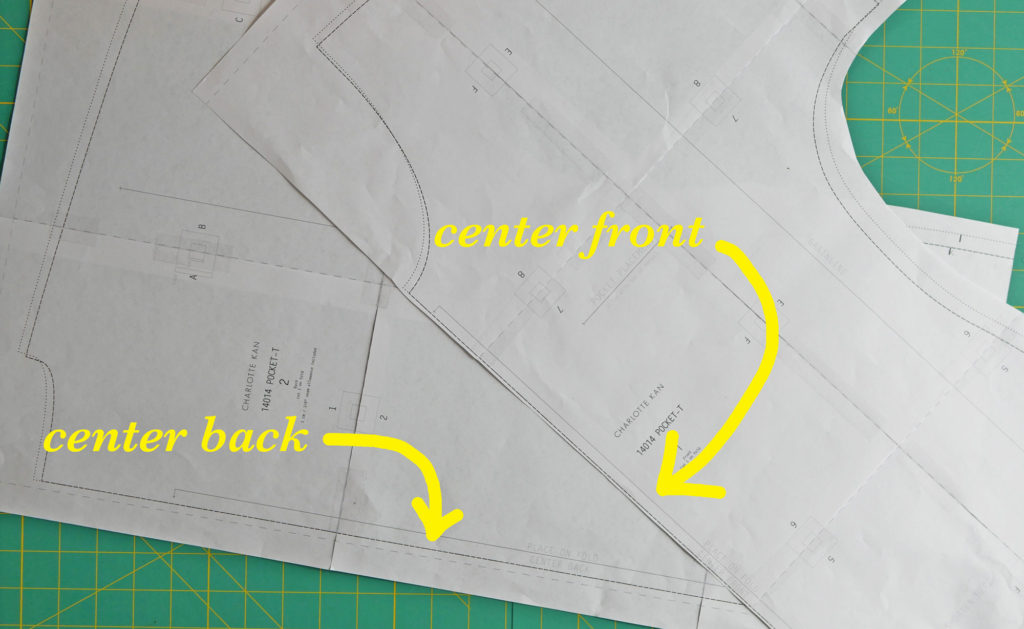
Pattern pieces that need to be cut on the fold are always one-half of the garment piece. Cutting on the fold lets you cut out the whole garment piece with just half of a pattern. This saves paper and some time but when you cut on the fold you can’t be sure how the bottom layer of fabric is lining up.
Solution: You need a whole pattern, not a half of one and you cut it out unfolded fabric.
When I need a whole pattern I make it out of tracing paper or tissue paper. Being able to see the fabric through the pattern piece allows you to place it exactly where you want it on the fabric which means you can line up stripes, match up large prints and avoid placing large circular elements of a print on the bust apex or other such misalignments.
Making a whole pattern from a half pattern is easy
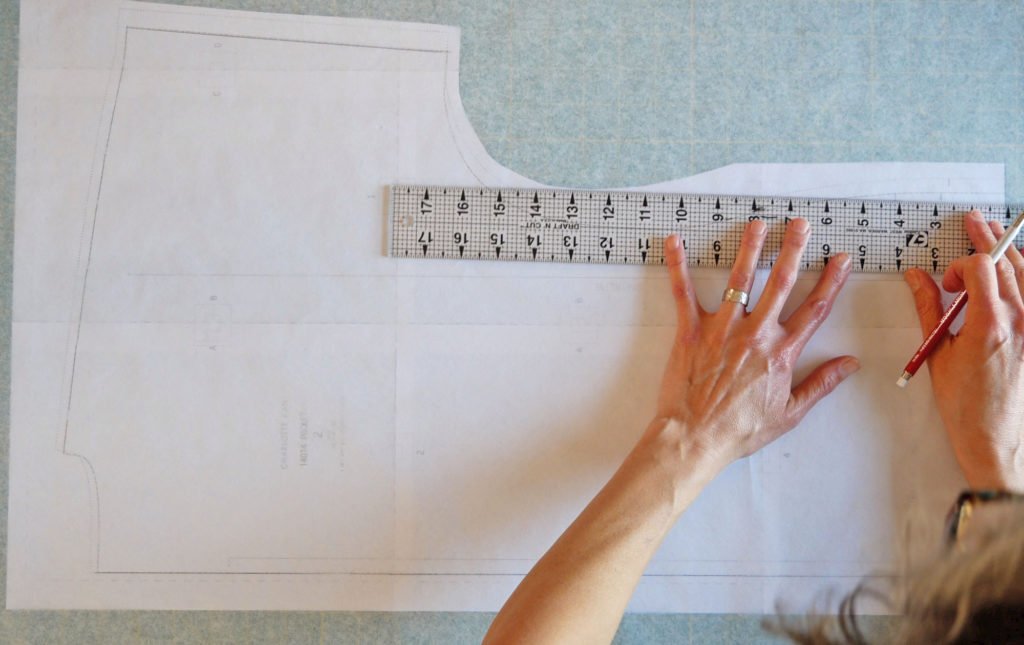
Step 1: If your pattern piece is opaque trace it onto tracing paper, tissue paper, or medical exam table paper (it’s cheap but not as see-through. It’s what I’m using in this post) For more info about paper for patternmaking see this post.
Don’t forget to trace off pattern notches and other important markings like pocket placement.
If your pattern piece is already on transparent paper skip this step.
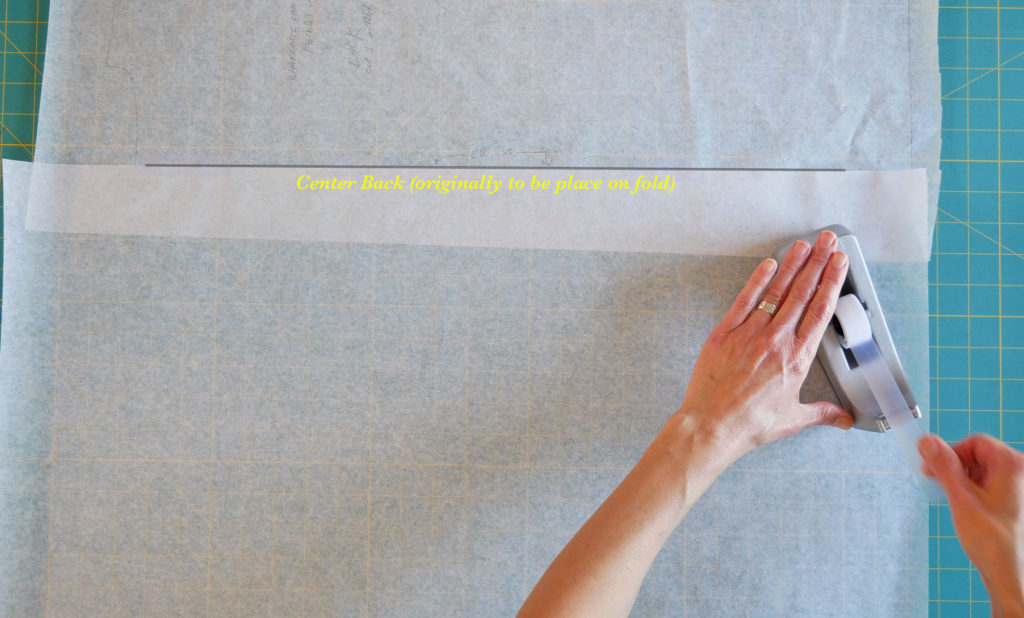
Step 2: Tape another piece of transparent paper (large enough to make another tracing of your pattern piece) to the “place on fold” edge of your traced pattern, or original tissue pattern.
Your pattern piece maybe small enough, and your tracing paper wide enough that you do not need to tape more paper to it. Fold your paper on the old”place on fold” line and see if the paper covers your entire tracing. If so, skip this step.
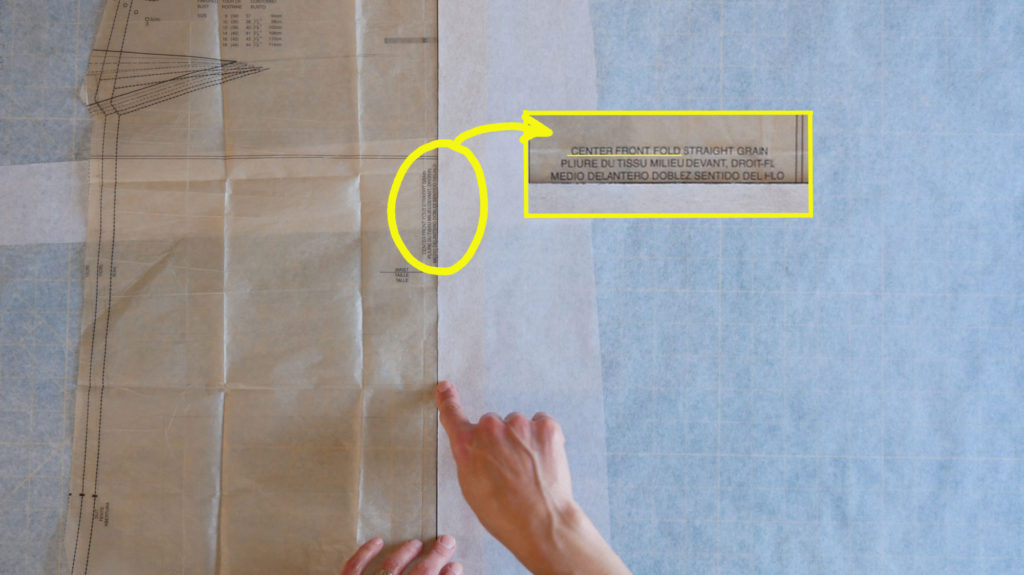
If your pattern is already transparent simply tape tracing paper to the center fold line
Step 3: Fold along the former “place on fold” line (usually Center Back or Center Front) You will fold the tape. Check that you have enough paper to cover your entire traced pattern. Tape on more if you need to.

Step 4: Flip the folded tracing paper so you can see the lines you drew and cut out the pattern you traced, both layers as if one. You can staple the layers together to keep them lined up while cutting with scissors if you need to (careful removing the staples to not rip the paper) or cut the pattern out flat with an X-Acto knife.
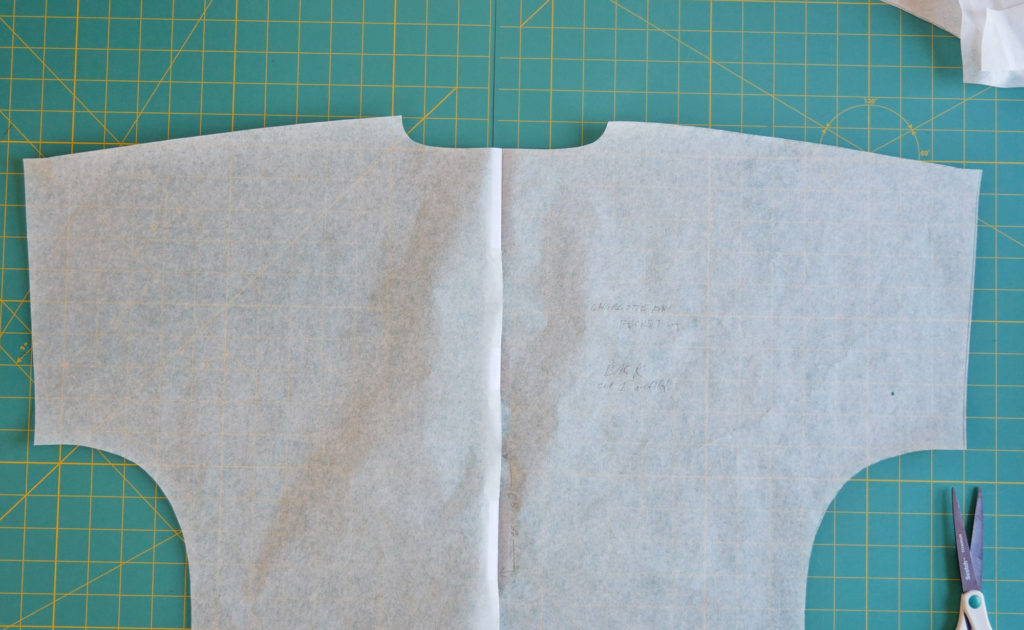
Unfold the pattern draw in the grainline and label it with the Producer’s name (ie Vouge, Butterick) the number or name of the style, What piece this is (ie front, back, yoke, etc), size, and how many you now need to cut (1, 1 fabric and 1 lining)
The pattern pieces that you need to cut two of are already whole patterns, not half patterns. You do not need to add anything to the pattern but you may want to trace them onto tracing paper for lining up stripes or for exact placement on printed fabric.
How to use a whole pattern
Layout the fabric on your cutting surface in a single layer (Do be sure to press out any wrinkles and creases in the fabric before cutting out)
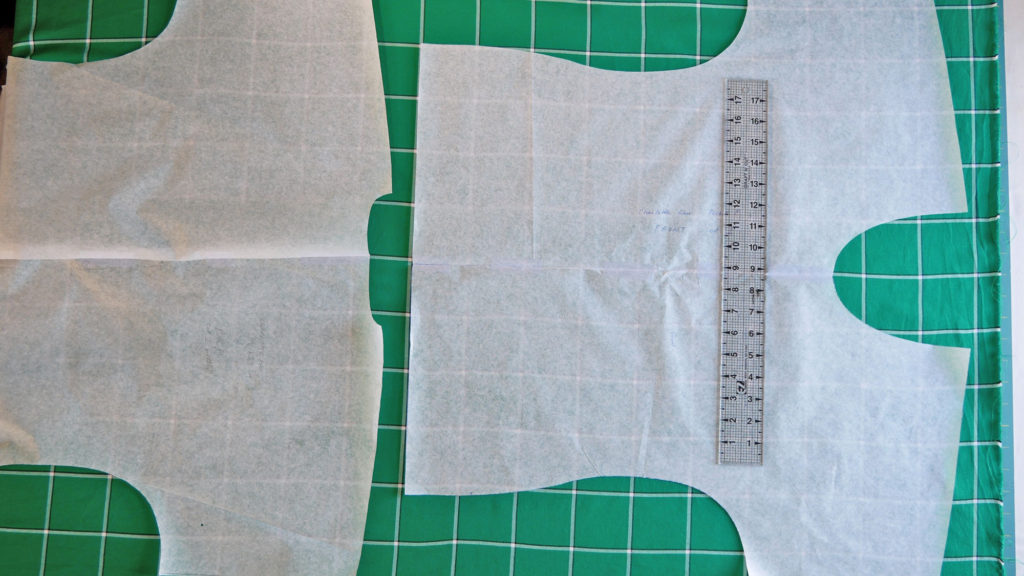
Lay all the main pattern pieces on the fabric roughly where you want them cut out of the print, avoiding or featuring certain elements in the print, or on certain lines of a striped or plaid fabric. Because you are not cramming your pattern pieces into as little fabric as possible, you definitely want to double-check that you have enough fabric before you start cutting. But this is not a meticulous lining up of pieces. This is just a quick double-check before you do all the meticulous lining-up work.
If your print is small and you’re not trying to match anything, fabrics with one-way designs can take extra fabric to cut it out so it’s wise to check this way before you start cutting.
Cutting out of a single layer is really great for slippery fabrics. It lets you keep track of the grain line and avoids the horribly misshapen piece you will get if you cut two layers out at one. That bottom piece is never right if you cut two layers at a time.
Very Important Reminder When you cut any pattern that you need two of (two side fronts, two sleeves, two cuffs) out of a single layer make sure you cut one facing up and the other facing down so you end up with a right and left piece, not two identical pieces. I think everyone makes this mistake at least once so if you do, just check that box and see what you can do to salvage your project
How to line up stripes or other design elements on the fabric
I like to start with the main front pattern piece because I want to be sure stripes and certain design elements of the print are where I want them and not where I don’t on this front and center part of the garment. If your garment has another area that is the focal point, start with that pattern piece.
Lay the pattern on the fabric and check the bust area. Adjust the location of the pattern piece on the fabric so it’s pleasing to you.
Place pattern weights or pin the pattern piece down to keep it exactly where you want it.
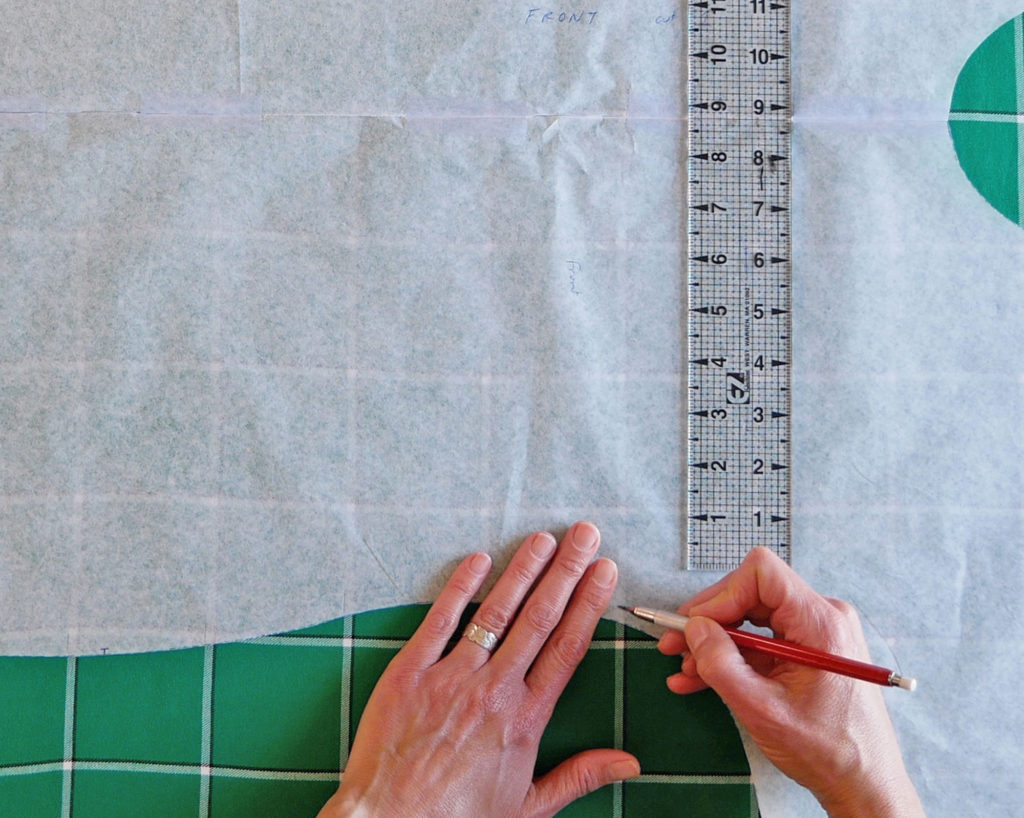
With a pencil, mark where the stripes are on the seams Just mark one side seam of the pattern if the center was on a fold (like mine). Mark both edges of a pattern if both edges are a seam (This is a pattern piece that was already a whole pattern like a front that has a center and side seam. This also means you need a right and left piece so be sure to flip this piece over to cut out the second piece).
On seams that curve, you can’t always line up all the stripes (especially vertical stripes) along the seam. I line up what I can and leave it at that.
If you’re dealing with a printed fabric that you want to match at the seams look for something in the print you can reference and mark where it is on the pattern on both side seams or wherever you need to match the fabric up.
These marks on the pattern piece are your reference marks for laying out this and the other pattern pieces.
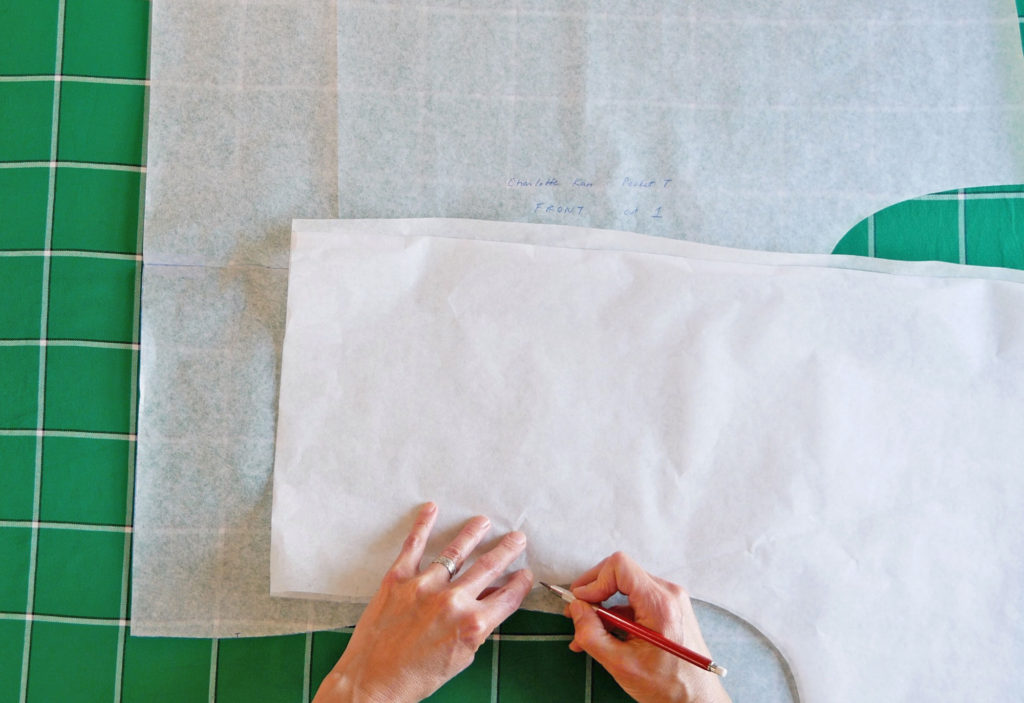
Fold pattern in half along the center line and copy your marks to the other seam side if it’s stripes. Now when you open up the pattern you have marks on both the right and left side seam showing where you place it on the fabric.
Unless prints are super symmetrical I would mark the both sides from the fabric itself
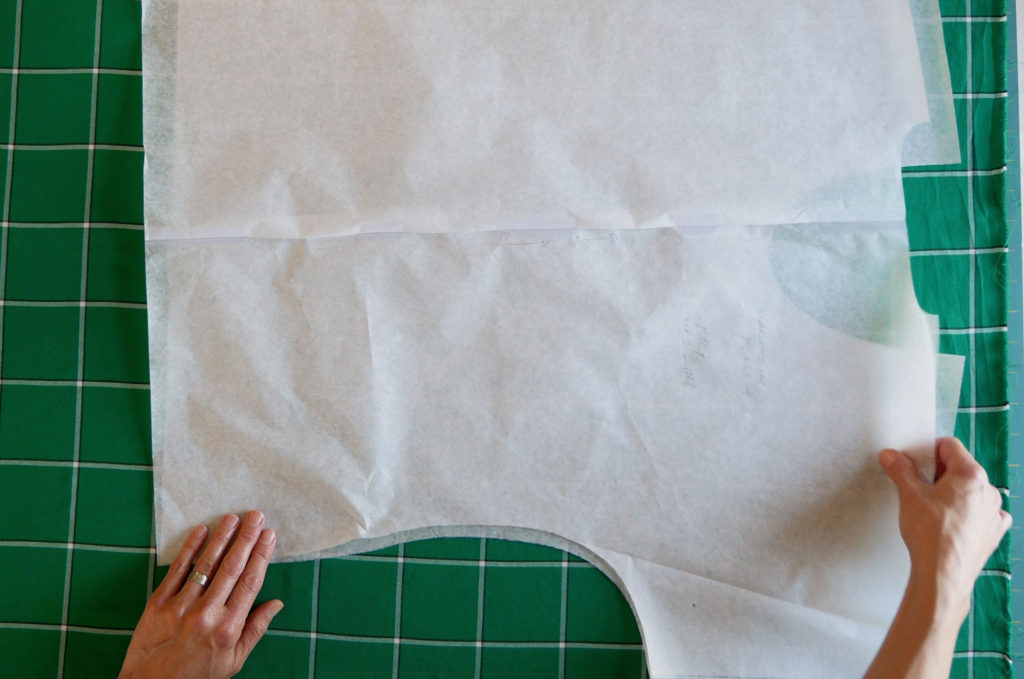
Lay the back pattern piece on top of the front pattern piece. One side at a time, line up any pattern notches first. Then transfer the markings you made along the seam from the front pattern to the back pattern. Since these marks show where the stripes are on the front, transferring them to the back means the stripes will be in the same place as they are on the front. And this means they will line up at the seam. (YAY!)
And the same works for design elements in a print. Copy your reference marks to the back pattern piece so both pieces can be laid exactly where you need them to be so the design will match on the seam.
Pockets and yokes could be matched up to the stripes as well, set perpendicular to the stripes on the garment or even cut out on the bias to be diagonal. You’re choice.
To match pockets or yokes lay the main pattern piece on the fabric where you will cut it out. Lay the pocket pattern piece on the pocket placement of the bodice and make reference marks where stripes or elements are. Then when you lay the pocket pattern piece on the fabric to cut out you can line it up with those reference marks and it will match.
For a yoke, it’s the same except lay the yoke pattern, upside down on the pattern piece it will be sewn to as if sewing them together and make reference marks on the yoke pattern at the seams. Remember, seam allowance if you’re matching a print.
Because I couldn’t match my pocket (due to how it folded and that my plaid is asymmetrical – the thin black stripes are only on one side of the white stripes) I made sure it was off enough to look like I wasn’t trying to match.
Sewing Notes
When sewing the seams you want to match pin the layers together at each stripe and maybe even in between (depending on how close the stripes are) to keep the layers matched up under the needle. You could baste your seam together before sewing especially if it’s at all slippery. Another option is to use a walking foot when sewing to keep the layers matched.
It is typical on low-priced garments that stripes will not be lined up. Since a hand-made garment is made with a lot of time and attention why not invest a little more time and attention when cutting it out?
You can make this shirt too
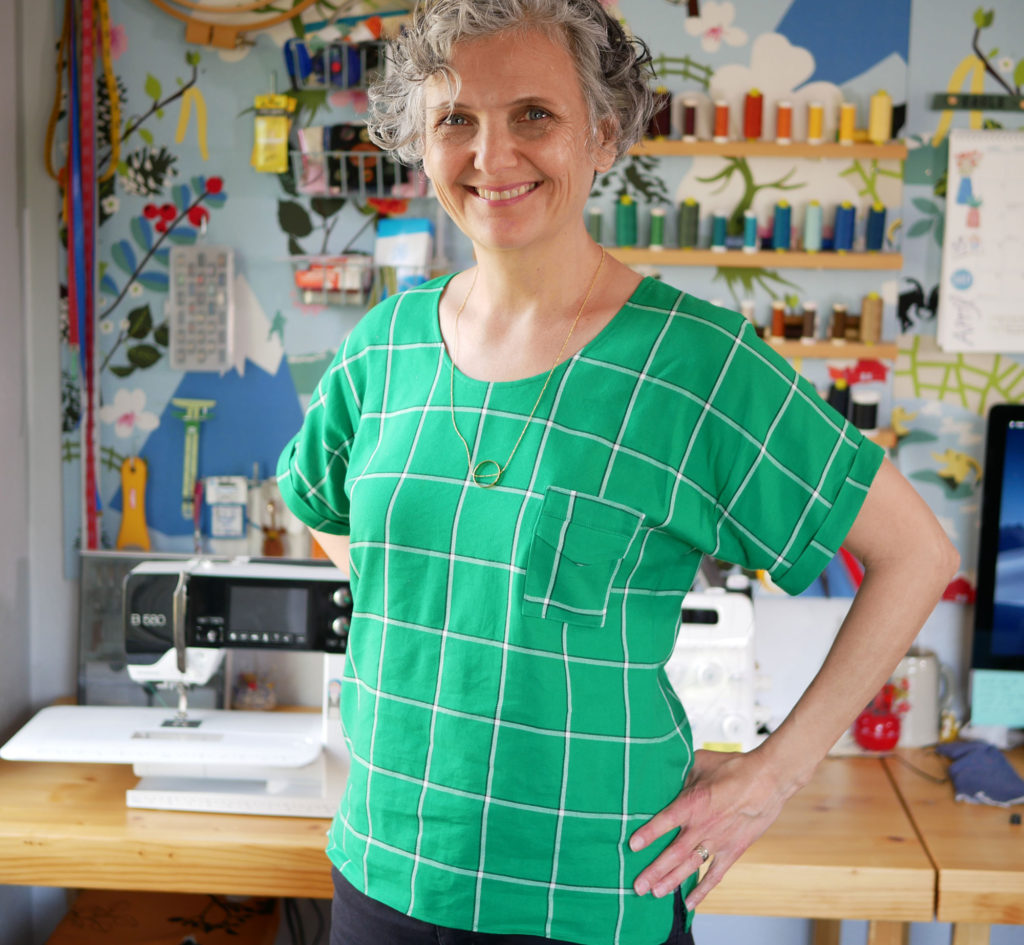
If you’re interested in this shirt you can find it here at the designer’s Etsy shop. There you can purchase and download the pattern instantly. It’s a beginner pattern for woven fabric but I caution that it is for a confident beginner or a patient beginner. It’s well drafted and the instructions are clear but it may be hard to visualize how to sew the pocket or cuffs, just follow the instructions step by step and you’ll get through it.
It’s really a nice top. It’s loose but has shape. I have already bought fabric to make some more.
If you have any pattern matching tips you want to share, or have any questions please put them in the comments below. Happy Sewing!
